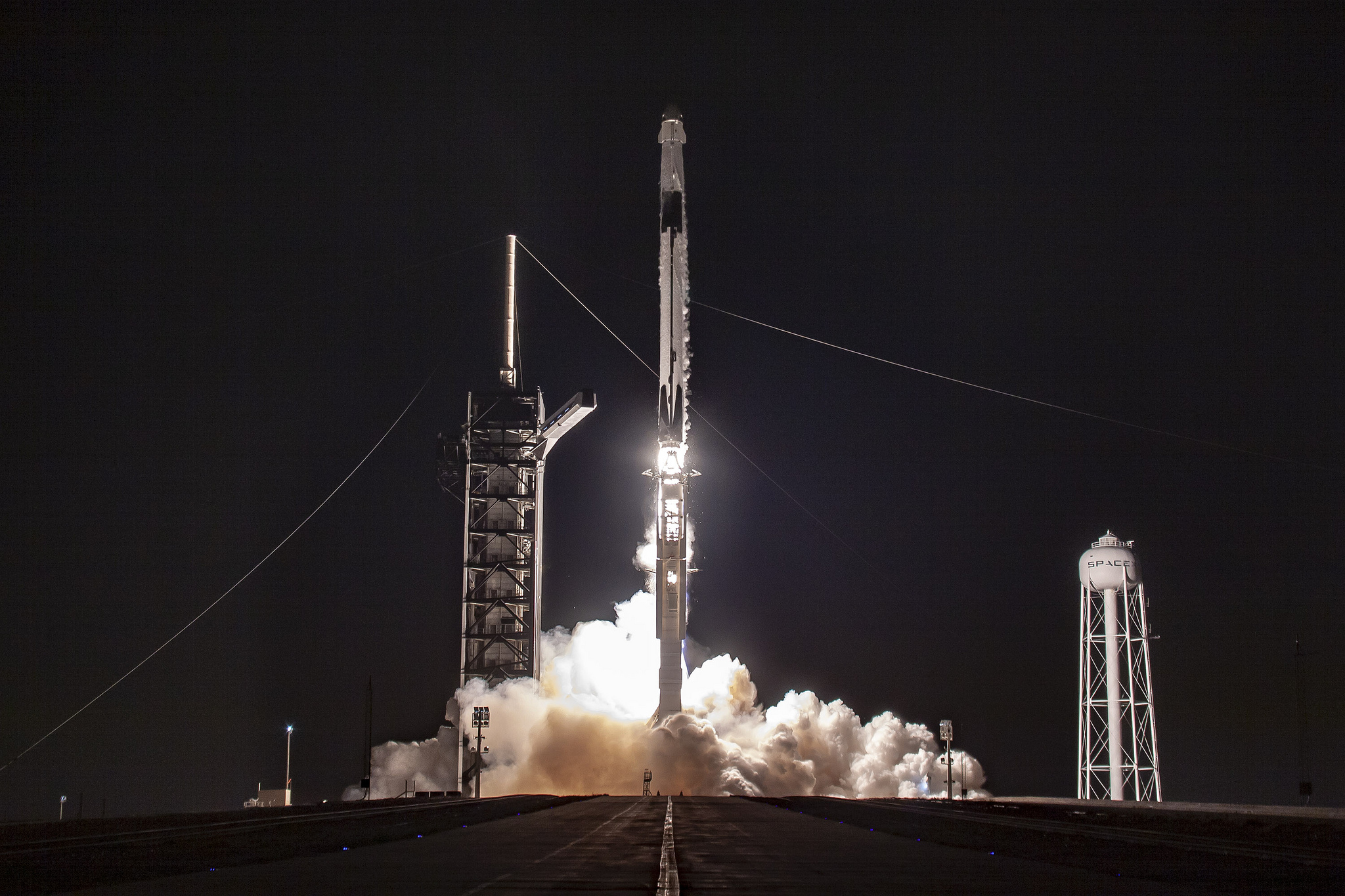SpaceX Crew Dragon Splashes Down in Atlantic to Cap Historic Test Flight
The first mission of SpaceX's new astronaut taxi is in the books.
The Crew Dragon capsule splashed down in the Atlantic Ocean off the Florida coast today (March 8) at 8:45 a.m. EST (1345 GMT), wrapping up a historic mission to the International Space Station (ISS).
There were no astronauts aboard this flight, only the sensor-packed dummy Ripley named after a character from the "Alien" films. But the success of the test flight, known as Demo-1, helps paves the way for a crewed mission of the SpaceX vehicle, perhaps as early as this summer.
That will be a huge milestone when it comes; astronauts haven't launched to orbit from American soil since NASA retired its space shuttle fleet in July 2011.
Related: SpaceX Dragon Crew Demo-1 Test Flight: Full Coverage

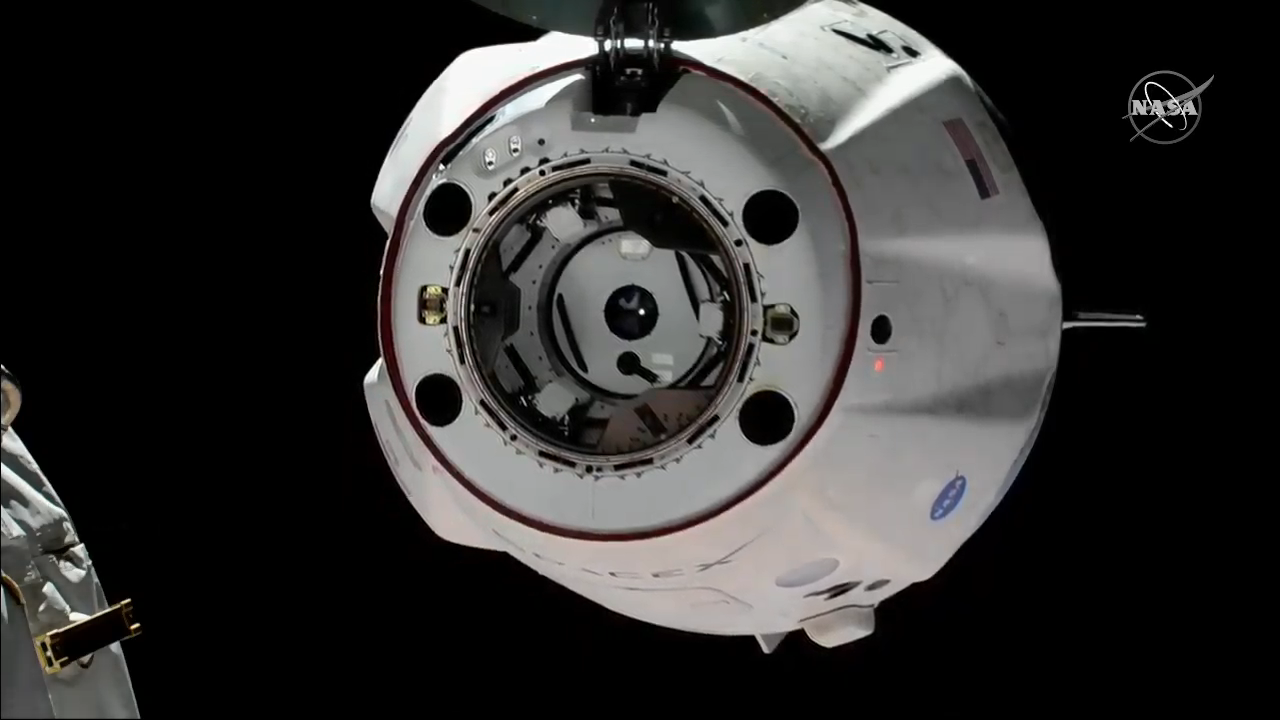

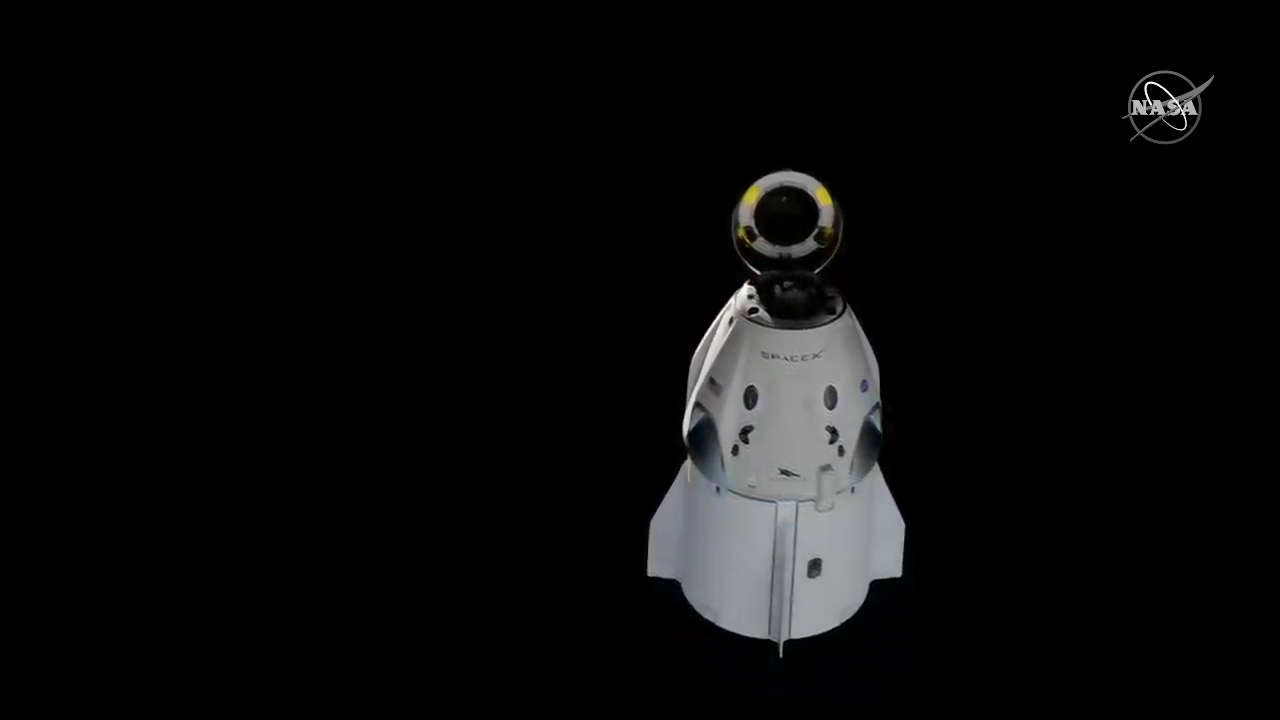
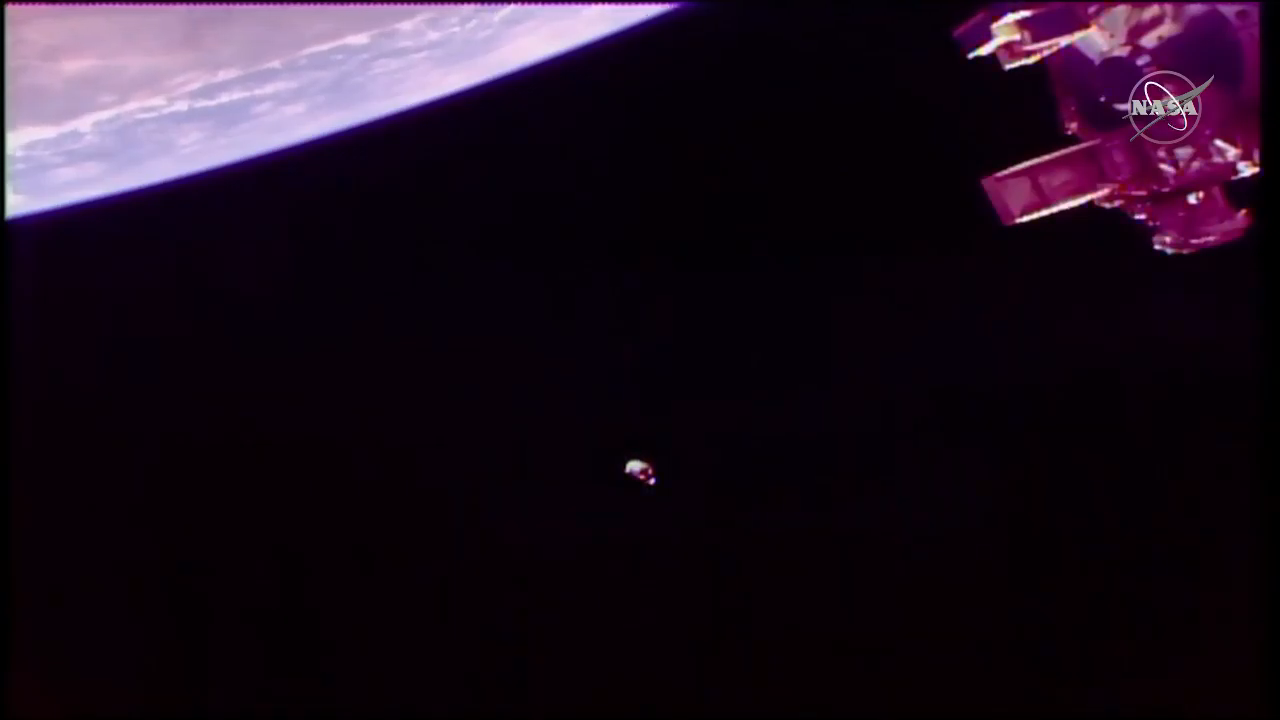
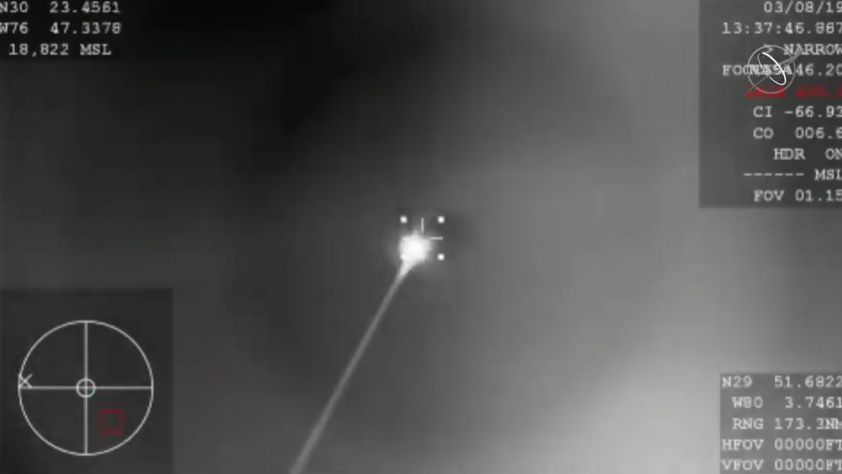

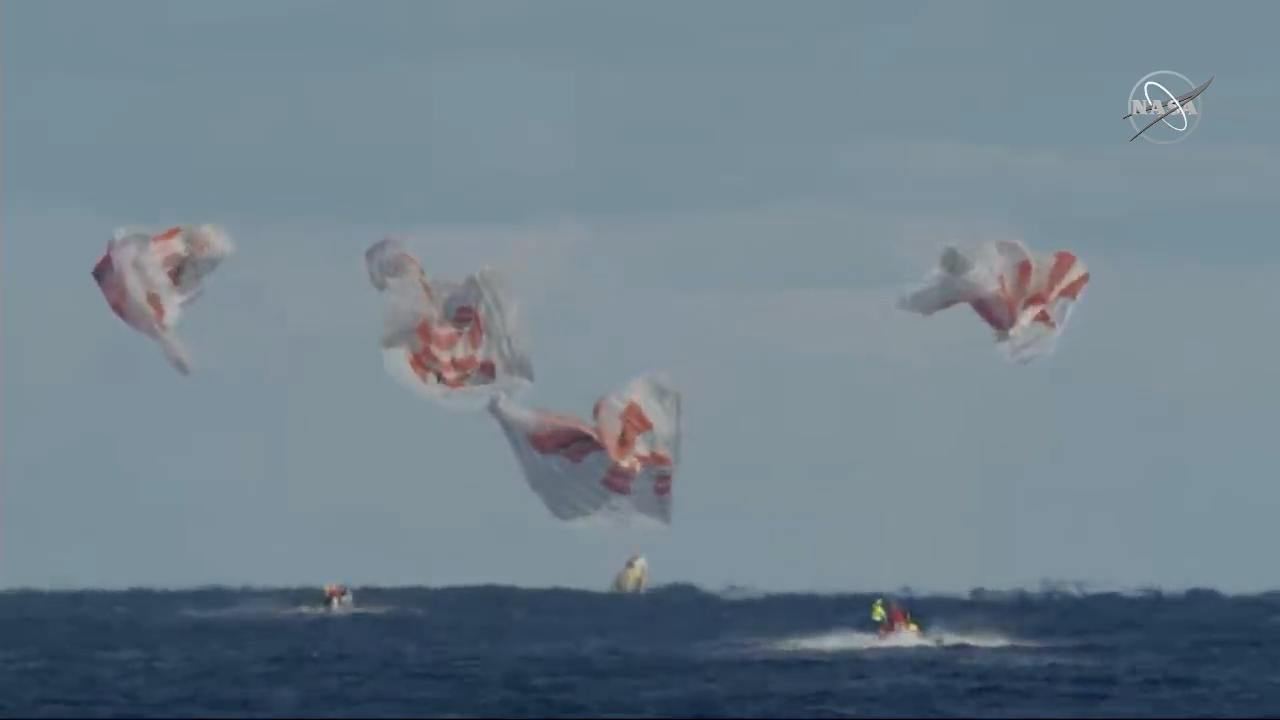
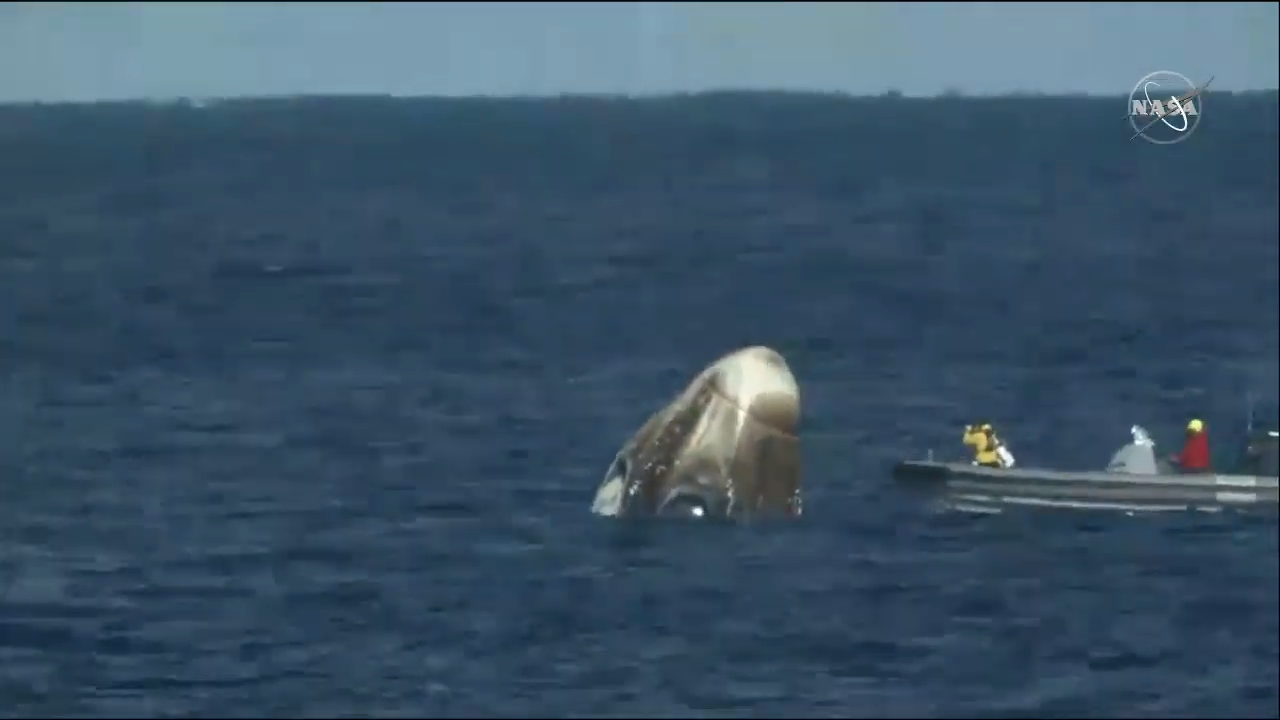
"Fifty years after humans landed on the moon for the first time, America has driven a golden spike on the trail to new space exploration feats through the work of our commercial partner SpaceX and all of the dedicated and talented flight controllers at NASA and our international partners," NASA astronaut Anne McClain radioed Mission Control from the ISS when Crew Dragon undocked from the orbiting lab earlier today.
"This is a new era in human spaceflight," NASA Administrator Jim Bridenstine said Wednesday (March 6) during a webcast event with Vice President Mike Pence, who spoke to McClain and Canadian Space Agency's David Saint-Jacques from NASA's Mission Control center in Houston.
Breaking space news, the latest updates on rocket launches, skywatching events and more!
NASA officials said there was a bit of Apollo history involved in today's Crew Dragon splashdown: It came nearly 50 years to the day after the Apollo 9 spacecraft returned to Earth in the same area on March 13, 1969.
Related: SpaceX's Historic Crew Dragon Demo-1 Mission in Pictures
A pioneering flight
NASA is currently dependent on Russian Soyuz rockets and spacecraft to ferry its astronauts to and from the ISS. And this service isn't cheap; each seat on the three-person Soyuz currently sells for about $80 million.
So, in 2014, NASA signed commercial-crew contracts with SpaceX and Boeing — worth $2.6 billion and $4.2 billion, respectively — to foster the development of homegrown American spaceships. Like SpaceX, Boeing is building a capsule, called CST-100 Starliner.
Back when the contracts were signed, NASA officials said they hoped these private spaceships would be up and running by the end of 2017. That didn't happen, of course. But both companies are now getting pretty close, as Demo-1 shows.
The mission began Saturday morning (March 2) with a liftoff atop a SpaceX Falcon 9 rocket from Kennedy Space Center in Florida. Crew Dragon carried Ripley and about 450 lbs. (200 kilograms) of supplies for the ISS crew. Also aboard was the adorable "Little Earth" Celestial Buddies plush toy as a "zero-g" indicator. That toy will remain aboard the station — it will be retrieved by SpaceX's first astroanut crew later this year — but Crew Dragon did return about 330 lbs. (150 kg) of experiment results and other gear to Earth on this flight, NASA officials said.
The main goal of Demo-1 was to test the capsule's many systems in flight, to make sure Crew Dragon is ready to carry astronauts. And the private spacecraft seems to have hit all its marks.
Crew Dragon docked autonomously at the ISS Sunday morning (March 3) and then stayed attached to the orbiting lab for five days. The capsule departed at 2:32 a.m. EST (0732 GMT) today, survived the fiery descent through Earth's atmosphere, deployed its parachutes and splashed down gently into the Atlantic's rolling waves, about 230 miles (370 kilometers) off the Florida coast.
None of this was routine. Crew Dragon is based on SpaceX's robotic Dragon freighter, which has been flying resupply missions to the ISS under a separate NASA contract since 2012. But the two capsules are very different, SpaceX founder and CEO Elon Musk said.
"Dragon 2, or Crew Dragon, is a fundamental redesign," Musk said during a postlaunch news conference Saturday. There's "hardly a part in common with Dragon 1," he added.
For example, Crew Dragon has seats, windows, a life-support system, touch-screen controls, emergency-escape thrusters and other astronaut-related accoutrements that the cargo version lacks. Crew Dragon also docks directly with the ISS, whereas its older cousin must be grappled by the orbiting lab's huge robotic arm.
In addition, the crew-carrying capsule has a different parachute system and back-shell shape, neither of which had shown its mettle during an orbital mission. So, a successful return to Earth today was far from guaranteed.
"I see hypersonic re-entry as probably my greatest concern," Musk said during Saturday's news conference.
Crewed flight coming
The coming months will be packed with big milestones for both SpaceX and Boeing, if all goes according to plan.
Up next for SpaceX is a test of Crew Dragon's emergency-escape system, which is designed to get the capsule to safety if a serious problem were to occur during launch. This uncrewed flight, which is currently targeted for June, will employ the same capsule that just came back to Earth.
After that — possibly as early as July — will come Demo-2, Crew Dragon's astronaut-carrying debut. This landmark test flight will tote NASA's Bob Behnken and Doug Hurley to and from the ISS. Operational, contracted missions, each of which will ferry four astronauts, will commence sometime thereafter.
Meanwhile, Starliner's first uncrewed test mission to the ISS could launch as soon as next month. The Boeing capsule's emergency-escape test and first crewed demonstration flight to the orbiting lab will occur no earlier than May and August, respectively.
"It won't be long before our astronaut colleagues are aboard Crew Dragon and Boeing Starliner vehicles," McClain said. "And we can't wait."
Space.com managing editor Tariq Malik contributed to this story. Mike Wall's book about the search for alien life, "Out There" (Grand Central Publishing, 2018; illustrated by Karl Tate) is out now. Follow him on Twitter @michaeldwall. Follow us on Twitter @Spacedotcom or Facebook.
- SpaceX's Crew Dragon Demo-1 Test Flight in Pictures
- Take a Walk Through SpaceX's Crew Dragon Spaceship
- The Latest News on SpaceX, Crew Dragon and More
Email Tariq Malik at tmalik@space.com or follow him @tariqjmalik. Follow us on Twitter @Spacedotcom and on Facebook.

Michael Wall is a Senior Space Writer with Space.com and joined the team in 2010. He primarily covers exoplanets, spaceflight and military space, but has been known to dabble in the space art beat. His book about the search for alien life, "Out There," was published on Nov. 13, 2018. Before becoming a science writer, Michael worked as a herpetologist and wildlife biologist. He has a Ph.D. in evolutionary biology from the University of Sydney, Australia, a bachelor's degree from the University of Arizona, and a graduate certificate in science writing from the University of California, Santa Cruz. To find out what his latest project is, you can follow Michael on Twitter.
